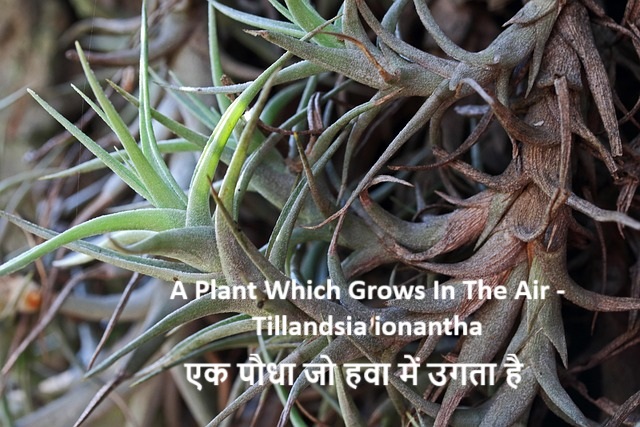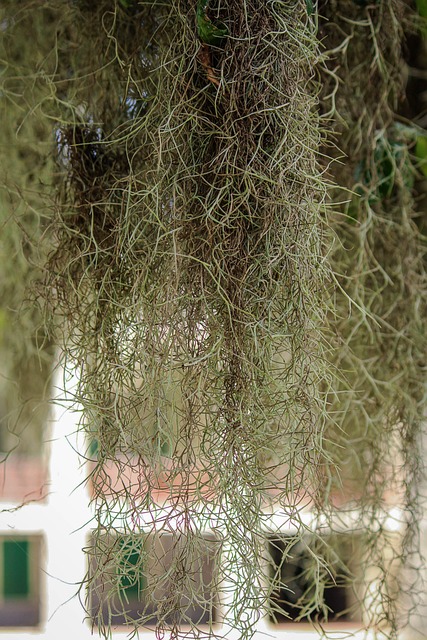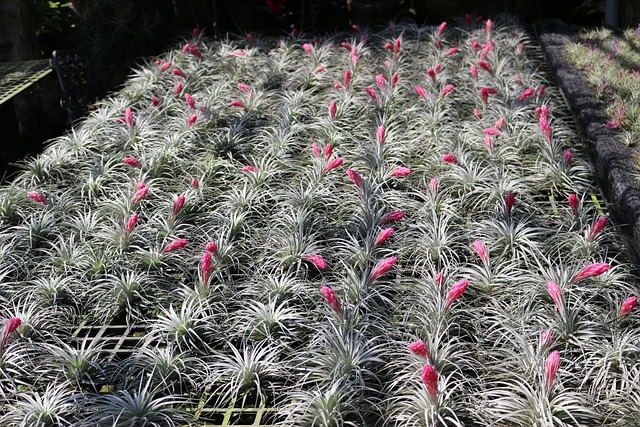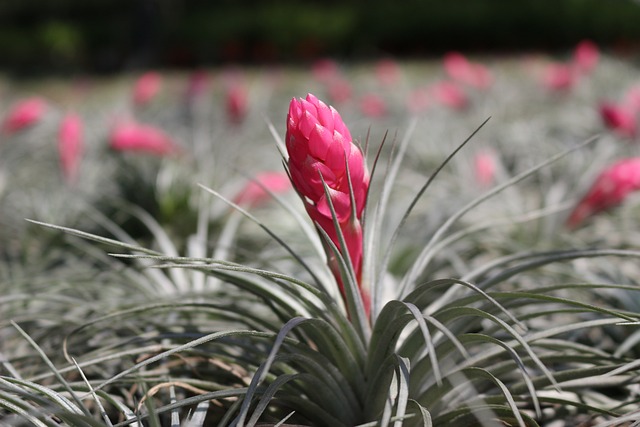
Tillandsia ionantha, commonly known as the “air plant” (Tillandsia ionantha), is the enchanting air plant. Among the diverse and captivating species of air plants, the air plant stands out due to its compact size, vibrant hues, and low-maintenance nature.
This epiphytic wonder requires no soil to thrive, making it an ideal ornamental plant for indoor gardens, terrariums, and creative plant displays.
In this article, we will explore the unique characteristics, habitat, care requirements, and benefits of cultivating Tillandsia ionantha.

Different hybrids like Tillandsia “Cotton Candy,” which is also a cultivar of Stricta x Recurvifolia, Tillandsia Abdita Air Plants, Colombia Thick Spanish Moss/Tillandsia Usneoides, Jumbo Tillandsia Streptophylla Air Plants – Rare Size and other tens of Air plants available for buying on AIR PLANT SHOP
Table of Contents
Botanical Profile of Tillandsia Ionantha
Scientific Name: Tillandsia ionantha
Family: Bromeliaceae
Common Name: Air Plant
Origin: Native to Central and South America, particularly in Mexico, Costa Rica, and Nicaragua –
Size: Typically grows between 5 and 8 cm (2 and 3 inches) –
Growth Form: Epiphytic, meaning it attaches itself to trees, rocks, and other surfaces rather than growing in soil.

Unique Characteristics-
One of the most striking features of Tillandsia ionantha is its transformation in coloration. Under normal conditions, the plant showcases a silvery-green appearance due to tiny trichomes (hair-like structures) on its leaves that aid in moisture absorption.
Yet, during the blooming phase, the leaves turn shades of red, pink, or orange, creating a mesmerizing visual contrast. Unlike traditional plants, air plants absorb nutrients and water through their leaves rather than their roots.
Their root system is more of an anchoring mechanism than a source of nutrients.
Natural Habitat and Adaptations
Tillandsia ionantha is naturally found in warm, humid environments, typically thriving in tropical forests or mountainous regions. As an epiphyte, it adheres to rocks, trees, and cliffs without feeding on them.
Instead, it absorbs moisture from the air through trichomes and collects nutrients from dust, rainwater, and organic debris.
These adaptations make the plant highly resilient and capable of surviving diverse conditions, including relatively arid environments where humidity levels fluctuate.
Care Guide for Air Plants (Tillandsia Ionantha)
Although Tillandsia ionantha is easy to care for, understanding its basic requirements ensures healthy growth and longevity.
1. Light Requirements-
Air plants thrive in bright, indirect sunlight. While they can tolerate low light conditions, prolonged exposure to direct sunlight, especially in hotter climates, may lead to dehydration and leaf burn.
Ideal placement includes: – Near a window with filtered sunlight – In shaded outdoor spaces like patios or balconies – Where there is not enough natural light, under artificial grow lights.
2. Watering Schedule
Watering is crucial for maintaining the health of air plants. Since Tillandsia ionantha absorbs moisture through its leaves, regular misting or soaking is recommended.
Misting: Spray the plant with water every two to three days to keep it moist.
Soaking: Submerge the plant in room-temperature water for 20 to 30 minutes once a week, ensuring it dries completely afterward. After watering, place the plant upside down on a towel to avoid water accumulation at its base, which leads to rot.
3. Temperature and Humidity
Being a tropical species, Tillandsia ionantha thrives in warm temperatures ranging between 15°C to 30°C (59°F to 86°F).
It prefers moderate to high humidity levels, making it a great choice for bathroom or kitchen placement where moisture levels are naturally higher.
4. Air Circulation
Good airflow is essential for air plants to thrive. Since they rely on air moisture absorption, stagnant conditions may cause mold or decay.
Positioning the plant in well-ventilated spaces ensures proper respiration and prevents excess moisture buildup.

5. Fertilization
Although not mandatory, occasional fertilization boosts growth and blooming. Use a bromeliad or orchid fertilizer diluted in water once a month to provide additional nutrients.
6. Display Ideas
One of the coolest things about Tillandsia ionantha is how easily it can be used to make beautiful designs. – Mounting on driftwood or tree bark – Arranging in glass terrariums with pebbles and moss – Hanging in macrame holders or wireframes – Placing on shelves, desks, or windowsills for a minimalist aesthetic
Propagation and Blooming
Tillandsia ionantha* reproduces through offsets or “pups,” small baby plants that emerge from the base of the mother plant post-blooming. Once the pup reaches half the size of the parent plant, it can be carefully separated and nurtured independently.
During its flowering phase, Tillandsia ionantha produces tubular purple or blue blossoms, attracting pollinators like hummingbirds and bees in natural habitats.
The plant typically blooms once in its lifetime, after which it focuses on producing offsets.
Benefits of Growing Tillandsia Ionantha
Cultivating air plants offers various advantages beyond aesthetics:
Air Purification: Absorbs toxins and pollutants, improving indoor air quality.
Low-Maintenance: Requires minimal care, making it ideal for busy individuals or beginners.
Space-Saving: Its compact size makes it suitable for small apartments, offices, and confined spaces.
Creative Decor: Enhances interior design with unique exhibit possibilities. Eco-Friendly: Grows without soil, reducing environmental impact and resource consumption.
How to start a garden–A beginner’s guide
Common Issues and Troubleshooting
Even though air plants are pretty hardy, they may run into some problems:
Drying or Browning Leaves:
Indicates underwatering or excessive direct sunlight exposure. Increase the number of times you water and give them filtered light.
Soft or Rotting Base:
Results from overwatering. Make sure to dry thoroughly after soaking to prevent fungal infections.
Lack of Blooming:
Could be due to insufficient light or nutrients. Supplement with occasional fertilization and optimize light conditions.
Conclusion-
The AIR PLANT (Tillandsia ionantha) is a beautiful air plant that is also very easy to take care of. Its ability to thrive without soil, stunning color transformation, and minimal maintenance make it an excellent addition to any plant lover’s collection.
By understanding its fundamental requirements and adopting proper care techniques, enthusiasts can enjoy the beauty and resilience of Tillandsia ionantha for years to come. Whether placed in a terrarium, mounted on wood, or elegantly displayed in hanging arrangements, air plants remain a captivating and rewarding plant for homes and offices alike. This article provide in-depth insights on air plants.
Happy gardening! 🌿
